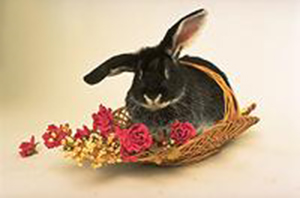Are there rules for design? Early this century, German and Austrian psychologists developed a school of thought known as Gestalt, a German word meaning “shape.” It was their goal to learn how the mind perceived and processed visual input based upon pattern seeking.

© 2013 Marla Meier. All rights reserved.
The result was a theory of principles, supposedly free from subjective aesthetic bias, that artists have been able to use to present visual information – whether it be the printed page, painting, or photography. This theory is called “Gestalt theory,” and although it may use unfamiliar names or titles, these principles will be familiar to most photographers. Gestalt is not design, but knowing the visual principles of Gestalt and their corollaries will give you a valuable design toolbox. This is the sixth article in a series.
No, you aren’t in your high school geometry class, or that dreaded inorganic chemistry class you had in college. Isomorphic Correspondence simply means that we respond to meaning. When we see an image such as a painting or a photo, we interpret its meaning based upon our experiences and memories.

During Thanksgiving, for many of us, this image has many meanings. It makes us think about the holidays, brings back memories of childhood, and reminds us that, come January, we’ll be on a diet once more. Additionally, it may suggest meanings connected with family or Thanksgiving. It may even make us hungry.

Baby animals are cuddly. Many of us are apt to go, “Ahh,” when we see pictures of a baby rabbit. We can imagine the soft fur and the warmth of the animal in our arms. But, for many of us, the rabbit is also a tasty meal. We may be reminded of a time at Grandma’s when she served fried rabbit for Sunday dinner.

How many of us say, “Yikes!” when we see this image? Many of us have an inherent fear of snakes, based upon primal fear and a culture that uses the snake as a symbol of evil.

Sex sells. Nubile bodies are used to sell everything from exotic vacations to beer. Most of us, especially us men, respond to such images on a visceral level. By associating these images with a product or a sales message, an advertiser hopes to use our memories, experiences, and fantasies to give his/her product or sales message more meaning than it really has.
How does this concept affect your photography? First of all, unless you take photographs strictly for yourself, you probably like to share your images with others. What makes that dreaded slideshow your uncle pulls out every time you visit so boring is that while it has tons of associations for him and your aunt, it has none for you.
After all, it was their trip to Borneo, not yours. You didn’t share the experience of buying food from a street vendor or smell the smells of the urban neighborhoods. So, pictures of them don’t mean much to you.
You should keep this exclusivity in mind when editing your own pictures. Ask yourself, “Do I like my images because they have a certain emotional appeal to me alone?” A special vacation shot or a picture of your grandkids, might be an example. Or, do your images convey a more universal meaning that will inspire emotional response in others? It helps to gather feedback from a trusted friend. Remember, that beloved sunset you have–so excellently captured, so expertly printed and framed–may be just another sunset to someone else.
Learn how composition can affect meaning. Placement of the subject within the viewfinder can have profound effects on the meaning. Placing the subject low and surrounded by a large amount of negative space sends a different message than cropping it close. The former may send the message of hopelessness or depression, the latter a message of intimacy or friendship.
It’s a challenge to create images with meaning. It’s what separates a good photographer from a mediocre one. In judging contests and exhibits, I’ve seen many prints that are technically well done, but lack depth of meaning. These may be processed to resist aging in preparation for archival preservation, but they won’t stand the test of time on anyone’s wall except, perhaps, the photographer’s own.
For, without an emotional connection to the image, we’ll grow weary of it. It’ll remain on exhibition for a few months and then be taken down or simply ignored as part of the background blur of our lives. Our ability to connect with an image emotionally entices us to keep coming back to an image over and over again in order to repeat the emotion. Or, what’s even more exciting, we may find new meaning in the image as we grow emotionally and experience it in a fresh, new way.
A part of the issue surrounding meaning is the controversy over whether an image should be titled. Many contests require that the photographer name her image as part of the process of entering. And I know of several professional competitions in which the title of the print is actually part of the judging process.
I can’t tell you how strongly I object. A strong print needs no title. If I have to be told what the meaning of a print is via a title, I wonder if the photographer is certain of his message.
Titles also serve to direct and/or mislead. A title given by a photographer may direct his viewer in a particular direction, but without the limitations of a title, a viewer may discover meaning which was only subliminally apparent to the photographer. We have all taken a picture and thought it meant one thing, only to find that everyone else was seeing something else– something that emerged from our subconscious. A title, in this instance, would have served to confuse the real meaning.
And, of course, there is the issue of language and culture itself. If a title is important, what if it’s in a language the viewer doesn’t understand? Does the image cease to have meaning? Of course, not. Art, in general, and photography specifically, are universal languages. They speak to us all–regardless of our native tongues or cultures.
All photos are courtesy of Corel Corp. They are intended for your viewing pleasure and may not be downloaded for any other purpose. Photos Copyright © Corel Corp.
You’ll want to read all of the other articles in the series:
Part 1 – Gestalt Theory and Photographic Composition: Equilibrium
Part 2 – Gestalt Theory and Photographic Composition: Closure
Part 3 – Gestalt Theory and Photographic Composition: Proximity
Part 4 – Gestalt Theory and Photographic Composition: Continuation
Part 5 – Gestalt Theory and Photographic Composition: Figure/Ground
by Michael Fulks

Leave a Reply